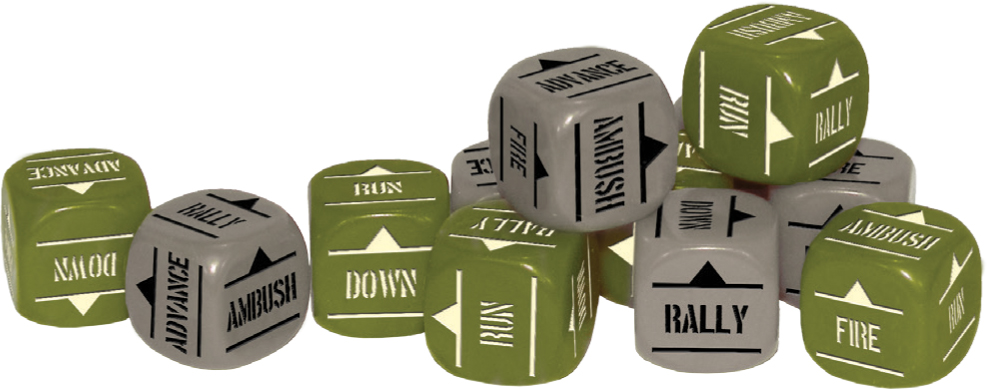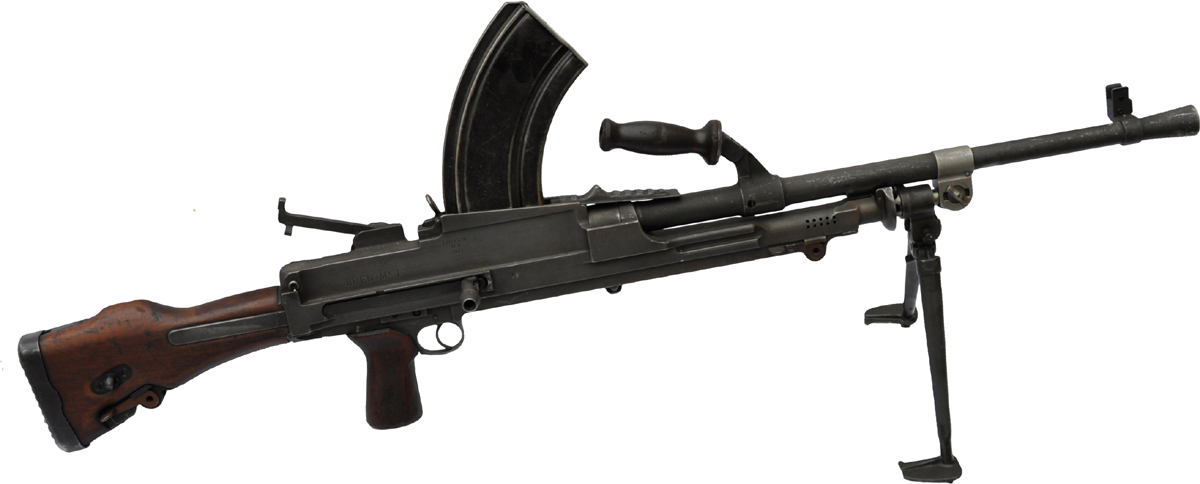To begin a game of Bolt Action you will need this set of rules and one or more opponents to play against. Each opposing side will also require painted model troops, representing the soldiers, guns and tanks of your chosen armies. Finally, you must find a playing surface to represent the battlefield – a table top of some kind is the preferred solution, but the floor will do and certainly has the advantage of size. Ideally, your battlefield will be fashioned to represent a suitable scene where the action is to take place. It might include model woodland, buildings, roads, hills and so on. It could be an industrial scene with shunting yards and factories. Or perhaps it is simply a wasteland of heath and marshes. There are just a few more basic supplies you will need before you are ready to take your armies into action.
During the battle it is necessary to measure distances when you move your troops and when they shoot their weapons. All distances in this book are given in inches (e.g. 6”, 12”, etc.). If you prefer to play using centimetres you are welcome to do so, counting each inch as either one or two centimetres as you please.
The easiest way to measure distances during the game is without a doubt a retractable tape measure, but you can also use rulers of suitable length if you prefer.
Bolt Action uses ordinary six-sided dice, which we simply call a ‘die’ or ‘D6’ for short. Rolling an ordinary die gives you a random number between 1 and 6. Occasionally we will need to generate a different range of results, so you will see the following notation used throughout the rules.
| D2: | This means roll an ordinary die and on a roll of 1, 2 or 3 the result is 1, and on a roll of 4, 5 or 6 the result is 2. |
| D3: | This means roll an ordinary die and halve the result, rounding up, thus generating a score of 1, 2 or 3. |
| 2D6: | This means to roll two dice and add their results together, for a total score of between 2 and 12. Only rarely will you be asked to add more dice and add them together; for example, 3D6, 4D6 and so on. |
| D6+1: | This means to roll a die and add 1 to the result, generating a score between 2 and 7. This can be varied in many different ways by rolling different numbers of dice and then adding or subtracting different values. For example you could be asked to roll 2D6–1 for a final score of between 1 and 11, or you might be asked to roll D6+3, 3D6–2, and so on. |
In the Bolt Action game troops can be given different kinds of instructions, which we call orders. There are six different orders: Fire, Advance, Run, Ambush, Rally, and Down. We will explain how these work in due course. During play a die is placed next to an infantry, tank, artillery piece or other unit to show which order has been given. Flip the die so that the number showing uppermost corresponds to the order as follows.
1. Fire
2. Advance
3. Run
4. Ambush
5. Rally
6. Down
Ideally each player will have a set of distinctly coloured but otherwise identical dice to use for orders; for example, Germans blue and Russians green. Each side starts the game with one order die for each unit, which is to say one die for each squad or team of infantry and one for each tank, armoured car or other vehicle. So, if an army has six infantry squads, a machine gun team, and three tanks then it has ten distinct units and the player starts the game with ten order dice.
Warlord Games have made sets of special order dice in distinct colours – these dice are clearly marked Fire, Advance, Run, Ambush, Rally and Down. Although you don’t need to have these dice to play Bolt Action they are a convenient and attractive alternative to using standard coloured dice.
During the game both sides’ order dice are placed together in some kind of container and drawn blind one at a time to determine which side acts next. To facilitate this you will need a bag, large mug, a dice bag, pot, or some similar opaque container large enough to hold all the dice. In the rules we always refer to this as a dice bag, but it can be any suitable container so long as it allows you to draw the dice unseen.

If you don’t have two sets of differently coloured dice to use as order dice, then all you need are differently coloured tiddlywinks, beads or card chits instead. Let’s say you are using chits cut from a sheet of thin card. One player takes one blank chit for each unit in his army; the opposing player takes one chit for each of his units and marks his chits with a cross. The chits are then placed together in the dice bag and drawn at random to determine which side acts next. When a unit acts any dice can then be used together with the chit to show which order has been given. Alternatively, players can make up their own card counters with the orders marked on them if they prefer.
Pin markers are placed next to units when they are hit by enemy fire to show that they are ‘pinned’. This reduces their ability to respond to orders effectively. Any kind of distinctive marker will do the job and some examples of the kind of thing we use are shown below. The explosions are the official Bolt Action pin markers, while the helmet-and-rifle markers can also be acquired from Warlord Games, or recreated using spare parts from plastic infantry kits.
Occasionally you will need markers for other purposes, for example to mark a target for aerial attack or artillery bombardment. Use any distinctive marker for this. We often use a coloured chit.

Canadian troops defend against elements of an SS Panzer Division, by Peter Dennis © Osprey Publishing Ltd. Taken from Weapon 28: The Bren Gun


British Bren Light Machine Gun
TOP SECRET
Sometimes a rule will allow you to re-roll a result. This means to pick up the dice you just rolled if you are not happy with the result and roll them again. The second score is the one that you must use, even if it’s worse than the first! Note that you can never re-roll a re-roll – you must accept the re-rolled result.